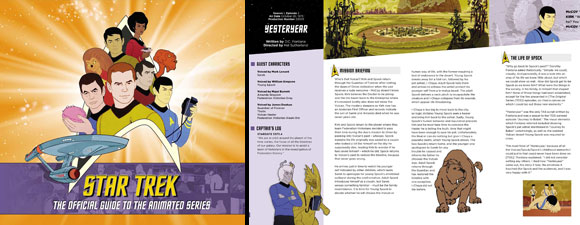Retro Review: One Of Our Planets Is Missing
4 min readWhen a huge cosmic cloud ingests a planet, Spock must determine whether it is sentient.
Plot Summary: When a massive cosmic cloud approaches the Pallas system near the edge of the galaxy, the Enterprise goes to investigate. The crew is horrified to see the cloud destroy the uninhabited outer planet, Alondra, and approach a Federation member world, Mantilles, currently under the command of Kirk’s acquaintance Robert Wesley. Former Starfleet officer Wesley begins preparations to send thousands of the children offworld to save them from the destructive cloud, which engulfs the Enterprise when the ship approaches to investigate. Spock realizes that the cloud’s internal structures are the equivalent of a digestive system and hypothesizes that it is a living entity, possibly sentient. Though he believes the Enterprise could destroy the brain and save Mantilles with an antimatter explosion, he tries to persuade Kirk to avoid killing an intelligent being and makes contact via a mind meld to ask the entity to spare the people of Mantilles. Once it understands that there are living beings on Mantilles and other planets it might devour, the cloud agrees to leave the galaxy and return from whence it came.
Analysis: It’s hard for me to evaluate any sci-fi without talking about what my family calls the Cheese Factor – scenes that come across as phony, shoddy, or just plain ridiculous. Sometimes the Cheese Factor is elevated by bad special effects or cheap visuals, while other times it’s entirely a function of the story, when the audience is asked to believe something that strains credulity even for science fiction. I’m rarely bothered by things like William Shatner’s over-acting or the fact that Lieutenant Arex’s multiple limbs look pretty silly from certain angles, but things like preposterous alien biology or having one too many characters speak in Majel Barrett’s voice can turn an episode from moving to laughable for me.
I’m willing to cut the animated series quite a lot of slack because it doesn’t have the resources of the live-action show. But “One Of Our Planets Is Missing” does a bit too much recycling of original series episodes and has some pretty silly-sounding technobabble – did anyone really know what ambiplasma was when the episode aired, and does Scotty’s long explanation of the antimatter force field to capture the villi make sense to anyone? Plus lines like “The cloud is alive!” and Spock’s comparison of the cloud to a large bull grazing on the matter of the universe don’t help matters. Though it has some admirable qualities, it’s a bit high in Cheese Factor for my taste.
For fans of the original series, a lot about “One Of Our Planets Is Missing” seems familiar. There’s a giant planet-eater like the one from “The Doomsday Machine,” except that it has biological components like the giant amoeba from “The Immunity Syndrome,” whose approach to an inhabited planet leads to a crisis for the governor like in “The Conscience of the King.” Spock attempts a long-distance mind meld with this completely unfamiliar creature like the one he performed on the Horta in “The Devil in the Dark.” Kirk reprises his speech from “A Taste of Armageddon” in which he explained that even a creature born with killer instincts can make the decision not to kill on any given day, and the alien – like so many worked upon by Spock’s logic and Kirk’s resoluteness – decides to accept the plan offered by the Starfleet officers rather than continuing to do what it’s presumably done all its life. So the good news is that this animated installment very much has the feel of an original series episode; the bad news is that it feels so much like an original series episode that it seems pretty redundant, thematically and emotionally.
Which is not to say that there aren’t some nice surprises. There’s quite a lot of action packed into a short episode, since the crew has to save the Enterprise from digestion by the alien before they can save Mantilles. Wesley reports that after some realistic hysteria, most of his colonists have agreed to help save the children. As in the previous animated episodes, Uhura takes initiative, figuring out how to run the electrical impulses of the cloud creature through the universal translator so that Spock and the others can “hear” its thoughts.
Kirk has a fairly serious Starfleet dilemma – seek out new life and new civilizations, or save thousands of lives from a civilization already established. As McCoy demands, he chooses to save an entire planet over a single alien that may not be sentient, but he’s willing to give Spock an opportunity to save the alien down to the last possible minute. There’s enough familiar Trek optimism that, when the episode ends on the hopeful note of the alien’s departure and Spock’s declaration that the wonders of the universe are completely incredible, it isn’t cheesy at all.






